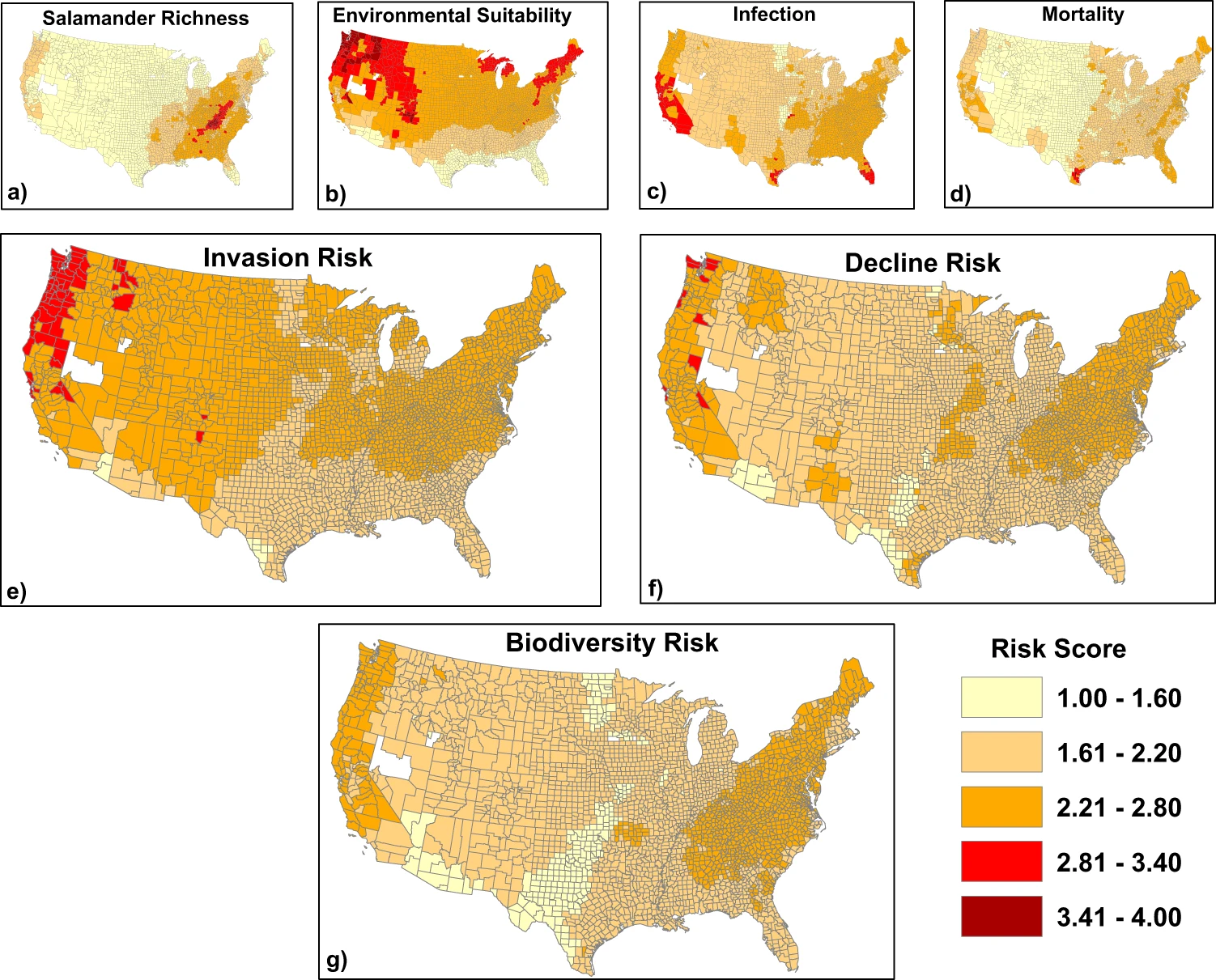A recent publication in “Nature” has shed light on the potential threat that the fungal pathogen Batrachochytrium salamandrivorans (Bsal) poses to North American amphibian species. The Open Access article, submitted by Matthew J. Gray et al, aimed to evaluate the risk of Bsal invasion and its potential impact on amphibian biodiversity in the region.
recent publication in “Nature” has shed light on the potential threat that the fungal pathogen Batrachochytrium salamandrivorans (Bsal) poses to North American amphibian species. The Open Access article, submitted by Matthew J. Gray et al, aimed to evaluate the risk of Bsal invasion and its potential impact on amphibian biodiversity in the region.
The study involved dose-response experiments on 35 North American species from 10 families, including larvae from five species. Results showed that Bsal caused infection in 74% and mortality in 35% of the tested species, indicating that both salamanders and frogs are vulnerable to developing Bsal.
Based on the findings of the study, it is expected that the greatest biodiversity loss would occur in the Appalachian Region and along the West Coast of the United States. It is estimated that predicted salamander losses could exceed 80 species in the United States and 140 species in North America.
However, the study also found that most amphibian communities will include a mix of resistant, carrier, and amplification species, suggesting that there is some level of resistance within North American amphibian populations.
The results of this study highlight the importance of monitoring and managing the trade of live amphibians, as well as the potential introduction of invasive species, to minimize the risk of Bsal invasion and mitigate the impact on North American amphibian biodiversity.
The full article can be read and/or downloaded here: https://www.nature.com/articles/s41467-023-38979-4
